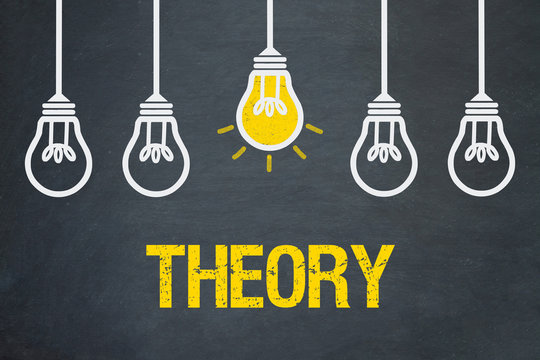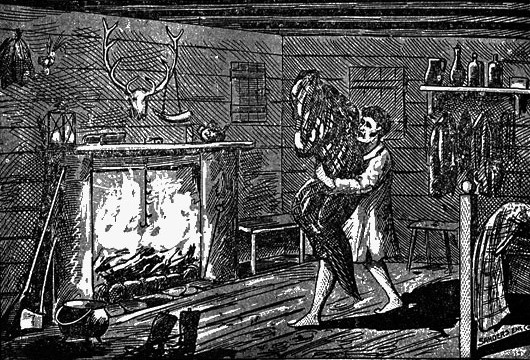
Poltergeists—just the word alone brings to mind images of mischievous, or even malevolent, spirits causing chaos. In movies, they’re usually depicted as ghosts moving objects, making loud noises, or even physically harming people. For many, the idea of a poltergeist is synonymous with horror. But, the reality of what poltergeists are (and aren’t) is much more complicated than what we often see on screen.
So, what exactly are poltergeists? Are they really ghosts causing chaos, or is there something else going on? Let’s take a closer look at the theories behind poltergeist activity and explore some real-life encounters that might make you think twice about what’s truly happening.
What Exactly Is a Poltergeist?
The term “poltergeist” comes from two German words: poltern (to make noise) and geist (spirit or ghost). So, a poltergeist, literally speaking, is a “noisy spirit.” And when we think of poltergeist activity, what typically comes to mind are loud, unexplained noises—knocking, banging, or even furniture being thrown around, often seemingly without cause.
But here’s where things get tricky. Poltergeist phenomena are different from other types of hauntings in that they don’t just involve eerie sounds or feelings of being watched. The activity often goes far beyond that, with objects moving, people being physically harmed, and even furniture being tossed around. So, are these disturbances the work of mischievous spirits—or something else entirely?
Theories Behind Poltergeist Activity

Though poltergeists are often portrayed as angry spirits, the true cause of poltergeist activity is still up for debate. Here are a few leading theories that might explain why these strange phenomena happen:
1. Psychokinesis (PK) Theory
One of the more fascinating ideas is that poltergeist activity could be caused by psychokinesis, or the ability to move objects with the mind. Rather than being caused by an external spirit, poltergeist events might actually be the result of unconscious mental energy, especially from someone experiencing high emotional stress.
Interestingly, many poltergeist cases involve young people, particularly teenagers, who are often dealing with major life changes—like puberty, family issues, or emotional trauma. Some researchers believe that the intense emotional turmoil these individuals experience may unintentionally trigger psychokinetic energy, causing the strange occurrences often associated with poltergeists.
2. Fraud and Hoaxes
Of course, not every poltergeist case is a mystery. Some experts argue that what’s often labeled as “poltergeist activity” is simply a result of people faking paranormal events for attention, money, or personal reasons. After all, some cases have been debunked as hoaxes, where people were caught moving objects or creating noises to create the illusion of a haunting.
However, not every case can be so easily explained away. In many instances, investigators have found no obvious signs of fraud, which makes it harder to dismiss these events as mere tricks.
3. Emotional or Psychic Residue
Another theory suggests that poltergeist activity might be tied to unresolved emotional energy left behind from traumatic events. This theory proposes that strong negative emotions—such as fear, anger, or grief—can leave an imprint on the environment, causing disturbances even after the initial emotional event has passed.
In this case, a poltergeist wouldn’t be a traditional ghost but rather the manifestation of energy that’s been trapped in a location. This energy could, theoretically, be triggered by specific environmental factors or even the people present at the time.
Real-Life Poltergeist Encounters
While poltergeist cases might seem like something straight out of a movie, there are plenty of real-life encounters that have left people scratching their heads. Let’s take a look at a few of the most famous, and most chilling, real-world examples of poltergeist activity.

The Enfield Poltergeist (1977-1979)
Arguably one of the most famous and thoroughly investigated poltergeist cases, the Enfield Poltergeist took place in a modest home in Enfield, England. Over the course of two years, the Hodgson family reported all sorts of unsettling occurrences: furniture moving, objects being thrown, and strange voices heard coming from the walls. At the height of the activity, even the children were allegedly attacked by an invisible force.
Investigators like Maurice Grosse and Guy Lyon Playfair were called in, documenting the events with photographs, audio recordings, and even videos. While some skeptics suggested the children were faking the activity, others point to the evidence gathered and the consistency of the events as proof that something unusual was happening.
The Bell Witch (Early 1800s)

The Bell Witch haunting is one of America’s oldest and most well-known poltergeist cases. In the early 19th century, the Bell family in Tennessee reported violent disturbances—objects flying through the air, strange noises, and physical attacks on family members, especially their daughter, Betsy. The entity responsible was said to be the spirit of a woman named Kate Batts, who had a vendetta against the Bell family.
This haunting was so well-documented at the time that it became part of American folklore, inspiring numerous books, films, and investigations. To this day, the Bell Witch Cave near the Bell family’s home is a popular (and reportedly haunted) tourist attraction.
The South Shields Poltergeist (2005)
A more recent case occurred in South Shields, England, in the mid-2000s. A family experienced violent poltergeist activity that included objects flying across the room, loud banging noises, and strange, unexplained smells. One of the most bizarre aspects of the case was the physical harm done to the children in the household, with some reporting being scratched or pushed by an unseen force.
Several paranormal investigators were called in to examine the situation, and while some of the footage captured by the family has been met with skepticism, the sheer number of witnesses and the intensity of the phenomena make this case particularly compelling.
Fact or Fiction?
So, where does this leave us? Are poltergeists real, or are they just the stuff of legend and superstition? The truth is, we may never know for sure. Some cases can be attributed to hoaxes, while others remain a mystery that modern science hasn’t quite been able to explain. Whether they are the result of a mischievous spirit, unconscious psychic energy, or some other phenomenon, poltergeists continue to fascinate and terrify those who experience them.
At the end of the day, whether or not you believe in poltergeists is a matter of personal perspective. But one thing’s for sure: when strange noises echo in the night or objects start moving on their own, it’s hard not to wonder if there’s something more to the story than meets the eye.
Have you ever experienced poltergeist-like activity? Or do you have a theory on what’s behind these strange events? Let me know in the comments!